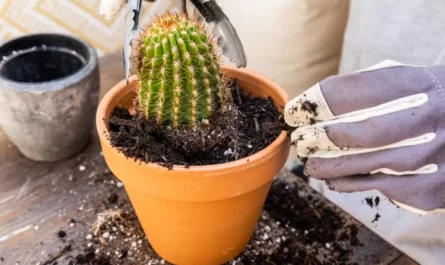
IN THIS ARTICLE
- Care
- Types
- Pruning
- Propagating
- Growing From Seeds
- Growing in Pots
- Overwintering
- Common Pests & Diseases
- Bloom
- FAQ
The English bluebell (Hyacinthoides non-scripta) is a perennial wildflower bulb. It is native to the British Isles and widespread throughout Europe and North America.
English bluebells are a sign that spring is in full swing. Their deep blue-violet blooms appear in mid to late spring and put on a fragrant show for up to five weeks before going dormant by early summer. The trumpet-shaped blooms have up-turned lips, which droop atop clumps that are about 12 to 18 inches tall and three to eight inches wide. Each flower grows six petals and produces creamy white pollen. English bluebells make good cut flowers.
The bulbs naturalize, vigorously carpeting any partially shaded areas such as woodland gardens where mature trees provide dappled shade. They can also be planted as a groundcover beneath trees, shrubs, and rosebushes.
Plant English bluebell bulbs in the late summer.
All parts of the plant, especially the bulb, are toxic to humans1 and toxic to pets.2
| Common Name | English bluebells, bluebells |
| Botanical Name | Hyacinthoides non-scripta |
| Family | Asparagaceae |
| Plant Type | Perennial, bulb |
| Mature Size | 12 in. tall, 3-8 in. wide |
| Sun Exposure | Partial |
| Soil Type | Loamy, sandy, clay |
| Soil pH | Acidic, neutral, alkaline |
| Bloom Time | Spring |
| Flower Color | Blue, purple |
| Hardiness Zones | 4-9 (USDA) |
| Native Area | Europe |
| Toxicity | Toxic to humans1, toxic to pets2 |
English Bluebell Care
English bluebells are easy to grow and care for, and they multiply plentifully each year. Once they are established, just sit back and enjoy the delightful show every spring for years to come.
When planting them, work two to four inches of organic matter into the soil, using a garden rake or hoe to loosen and mix the soil thoroughly. Remove any weeds. Use a trowel to dig a hole about four inches deep, or twice as deep as the bulb’s length. Set the bulb vertically, with the pointed end facing upwards. When planting groups of five or more, space them three to six inches apart. Cover each bulb with soil and tamp down the top of the soil to eliminate air gaps.

Light
English bluebells need plenty of light in the early spring but then prefer partial shade during the summer. These light requirement make them ideal for planting beneath deciduous trees.
Soil
Bluebells thrive in soil that is moist, well-drained, and moderately fertile. Overall, they adapt to all soil types. They prefer slightly-acidic to slightly-alkaline pH levels.
Water
English bluebells require ample moisture during their growth period in the winter (in warmer climates) and spring. Water bulbs well after planting. To keep the soil moist, water whenever the top two to four inches of soil feels dry. When growth appears, water only lightly, as overwatering may cause bulb rot. After flowering, continue to provide water until the foliage dies back. When watered well for the first couple of seasons, English bluebells multiply quickly.
Fertilizer
As new shoots appear in the spring, sprinkle a bulb fertilizer or a granular, slow-release fertilizer that is higher in phosphorus and lower in nitrogen, around the plants. This encourages healthy root growth and plenty of flowers. Feed the plants once again at the end of their bloom cycle, once the leaves begin to yellow and die. This helps the bulbs replenish their stores of nutrients for the next year’s batch of flowers.
Temperature and Humidity
Bluebells require temperate climate with cool to cold winters and moderately warm summers with cool shade. They are not suitable for hot, dry climates.
Types of Bluebells
There are two other types of bluebell in the Hyacinthoides genus:
- Spanish bluebell (Hyacinthoides hispanica) , a species that is considered invasive in the Pacific Northwest3. The Spanish bluebell flowers are a light bluish-lavender or white and the flower stem is rigid.
- Hyacinthoides x massartiana is a hybrid between English bluebell and Spanish bluebell with highly scented deep blue flowers.
Pruning
Other than removing the faded flower spikes before they set seed, there is no pruning to be done.
Propagating English Bluebells
English bluebells are easily propagated by dividing clumps that have become crowded. The time to divide them is in the late summer:
- Dig up the entire clump with a shovel.
- Gently shake off the soil and separate the clump into sections.
- Replant the sections immediately at the same depth as the original clump, spacing them 4 to 6 inches apart. If the soil is heavy or dense, mix in some sand or compost as well as a handful of bone meal or bulb fertilizer.
How to Grow English Bluebells From Seed
English bluebells can be started from seed but it can take up to five years for a seed to develop into a bulb. Assuming that you don’t want to wait that long, the recommended method of propagation is by division.
Potting and Repotting English Bluebells
English bluebells can also be grown in containers. Use a pot with good drainage holes and fill it with potting mix. The size of the container depends on how many bulbs you are planting, but because they won’t need room to multiply, you can plant them snugly, with just an inch or so between bulbs. Keep the the potting medium damp but not soaking wet until the bulbs sprout. Then water whenever the soil dries out. Once the bulbs have sprouted, move them into a location with partial shade.
Once the bulbs start overcrowding the container, transplant them to a bigger pot, or divide the clump and replant an appropriately sized section back into the same pot.
Overwintering
English bluebells are adapted to winters up to USDA zone 4 and need no special winter protection when planted in the ground. Potted bulbs, however, should be protected from freezing temperatures. If you can, bury the container in garden soil in the fall so the roots are well-insulated. If that’s not possible, place the container in a protected spot, such as a garage or garden shed, until spring.
Common Pests & Plant Diseases
Usually, all bluebells remain fairly free of pests and disease. They are resistant to deer, rabbits, rodents, and squirrels. Sometimes the parasitic fungus known as Uromyces muscari can cause bluebell rust. If this happens, treat with a fungicide.
How to Get English Bluebells to Bloom
If your English bluebells plants aren’t blooming, they might simply need more time. After dividing them, it can take a couple of years until you see them bloom in the spring.
The other reason for English bluebells failing to bloom is overfertilization with nitrogen, which produces leaves but no flowers. Feed the plants with a bulb fertilizer to adjust the nutrient content.
- Are English bluebells rare?In their native UK, they have become rare because a lot of their original habitat has been lost. To protect them, digging up the plants in the wild is prohibited.
- What should I plant with English bluebells?For striking color contrast, pair them with companions such as wild garlic, aconites, and daffodils.
- What do you do with bluebells when they have finished flowering?Let the foliage die back naturally and do not cut it off before it is completely brown. Cutting away the dying leaves too soon prevents the bulb from accumulating enough nutrients to bloom the following year.



